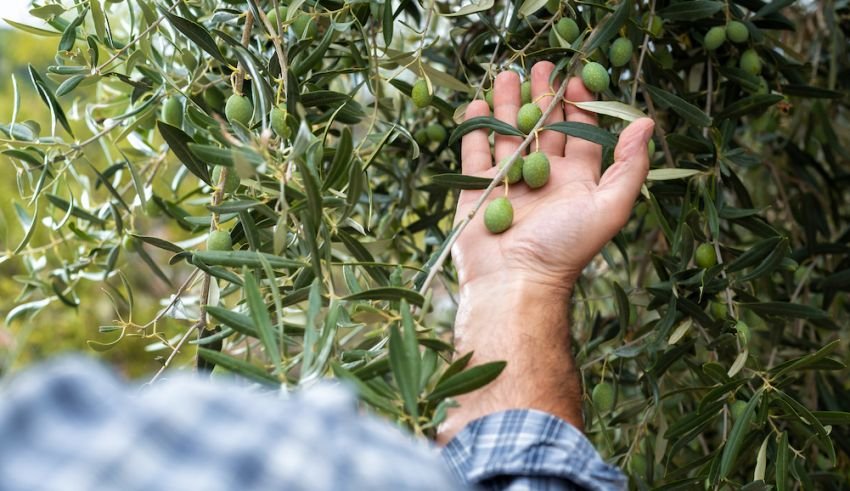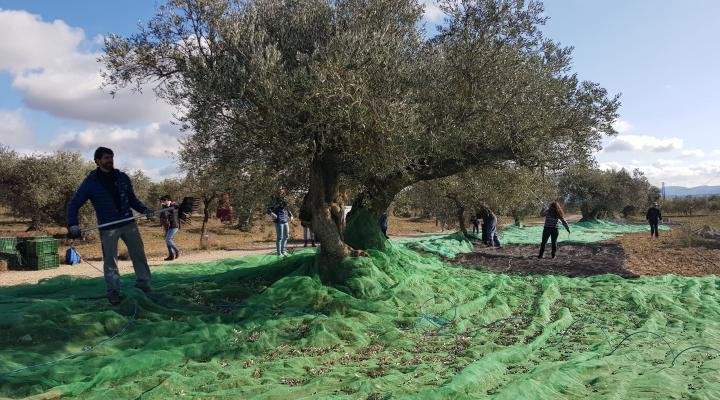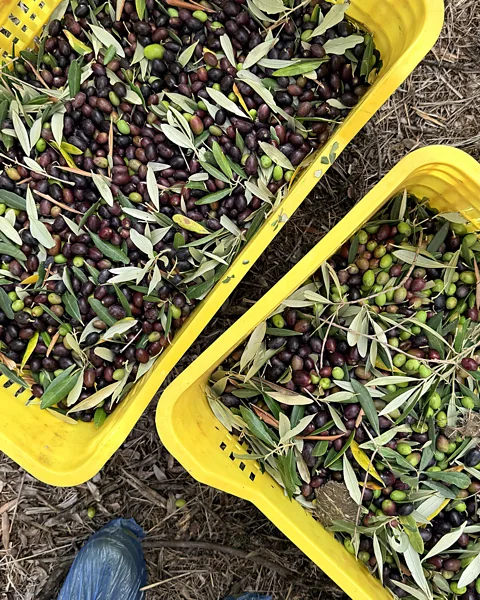How to Join an Italian Olive Harvest
Understanding how to join an Italian olive harvest has become a growing curiosity among cultural travelers. Many visitors now seek meaningful, hands-on experiences that go beyond traditional sightseeing. Every autumn, from the rolling hills of Tuscany to the rugged terraces of Calabria and the sunlit groves of Puglia, families and farmers gather to pick olives. These olives are then pressed into golden extra virgin olive oil. This centuries-old agricultural ritual was once reserved for local communities. Today, it has become one of the most authentic ways for visitors to connect with rural Italy.

Standing beneath the branches of an ancient olive tree, it becomes clear why the harvest holds such emotional and cultural value in Italy. The sound of olives falling softly into nets and the fresh scent of crushed leaves create a calm rhythm in the fields. Generations work side by side, sharing stories and traditions. This simple yet meaningful routine reflects a way of life that has endured for thousands of years. In recent years, the rise of oleoturismo (olive oil tourism) has opened this world to travelers. Visitors can now join local families and farmers during harvest season. They learn how olive oil is made and experience the deep roots of Italy’s agricultural heritage.
Before you pick up a rake and step into an olive grove, there are a few essential things to know. You need to understand the harvest season, the best regions to visit, and how to find farms that welcome volunteers or guests. It also helps to know what to expect from the experience. This guide will walk you through each step of joining an Italian olive harvest. It covers travel planning, cultural traditions, sustainability, and immersive olive-picking experiences.
The Tradition of Olive Harvesting in Italy
Olive cultivation has been a vital part of Italy’s identity for over 4,000 years. The annual olive harvest, known as la raccolta delle olive, is more than a farming activity. It is a cultural celebration that brings families and communities together. Many Italian families still care for small ancestral olive groves. They produce their own extra virgin olive oil (EVOO) for use throughout the year. Most small farms avoid heavy machinery. Instead, they harvest by hand or use simple tools to protect the trees and preserve the rich flavor of the olives.
The harvest season typically runs from mid-October to early December, depending on the region and climate. During these weeks, rural life revolves around the harvest. Days begin early in the groves, and evenings often end around the family table, sharing homemade meals and tasting freshly pressed olive oil—vibrant green and rich in aroma. For many Italians, the harvest is more than work; it is a ritual, a moment of connection with the land, and a time for families to gather and celebrate their heritage.

In recent years, olive oil tourism has brought renewed interest to this ancient tradition. Travelers now have the opportunity to step into this world, joining farmers in the fields, learning how to distinguish authentic extra virgin olive oil, and discovering the art and science behind olive cultivation. SEO Title: How to Join an Italian Olive Harvest – Ultimate Guide to Olive Oil Tourism in Italy
Meta Description: Discover how to join an Italian olive harvest, experience authentic olive oil tourism, and immerse yourself in Italy’s timeless agricultural traditions. Learn where to go, what to expect, and how to take part in an unforgettable olive picking adventure.
How to Join an Italian Olive Harvest: A Complete Guide to Olive Oil Tourism in Italy
Italy in autumn is a dream—golden vineyards, crisp mountain air, and the scent of wood-fired meals drifting from rustic farmhouses. But there is one tradition that captures the true heart and rhythm of rural Italy more than any other: the olive harvest. Known as la raccolta delle olive, this centuries-old ritual brings families together each year to gather olives that will be pressed into precious extra virgin olive oil.
While once a quiet, home-based custom, olive harvesting in Italy is now opening its branches—literally—to the world. Travellers seeking authentic cultural experiences are flocking to Italy not just to sightsee, but to take part in the harvest itself. From Sicily to Tuscany, olive farms now invite guests to roll up their sleeves, grab a rake, and experience the ancient joy of transforming olives into liquid gold.
In this in-depth guide, you will learn how to join an Italian olive harvest, where to go, and what to expect from the experience. You will also discover how olive oil tourism is helping to revive rural traditions across Italy. Whether you are a food lover, a culture seeker, or someone dreaming of slow life in the Italian countryside, this guide will help you plan your olive harvest adventure.
What Is the Italian Olive Harvest?
The Italian olive harvest is more than a seasonal task—it is a ritual deeply rooted in history, family, culture, and survival. Each autumn, Italian families gather beneath ancient olive trees to harvest olives by hand. The olives are then taken to a local frantoio (olive mill) and cold-pressed within 24 hours to create extra virgin olive oil (EVOO)—one of Italy’s most treasured products.

Unlike industrial farming, many small Italian producers still use traditional, eco-friendly methods. Trees are hand-combed using small rakes, nets are placed beneath branches to catch fruit, and olives are transported in wooden crates or breathable sacks to preserve quality. This artisanal approach results in high-quality, aromatic olive oil bursting with flavor.
Joining this harvest means stepping into a living tradition. It connects you to the land, the seasons, and the Italian way of life.
An Italian Autumn Tradition: The Heart of the Olive Harvest
Every year, as summer fades and Italy’s coastal towns grow quiet, a powerful seasonal ritual begins deep in the countryside. This is the time of la raccolta delle olive – the olive harvest. From the rolling hills of Tuscany to the rugged mountains of Calabria, families gather beneath silver-green olive trees. They collect the fruit that has sustained Mediterranean culture for thousands of years.
Unlike industrial farming seen in other parts of the world, olive harvesting in rural Italy is still deeply personal. Families rely on handpicking tools, simple nets, and centuries-old traditions passed down through generations. The process is labor-intensive, but the reward is worth it. The result is fresh and fragrant extra virgin olive oil (EVOO), an essential ingredient in Italian cooking.
In this section, we explore the beauty, emotion, and cultural importance of this time-honoured tradition before diving deeper into how to join an Italian olive harvest yourself.
What Makes the Italian Olive Harvest Special?
The olive harvest is more than agricultural work; it is a celebration of heritage. Many Italian families care for groves planted by their ancestors. These groves are spiritual places – witnesses to marriages, births, family gatherings, and seasonal change. Working together beneath the trees is often seen as a way to connect with both nature and family history.

During harvest season, weekends are spent gathering olives and taking them to the local frantoio (olive mill). There, the fruit is pressed into golden-green oil. The crisp air carries the earthy scent of crushed olives. Evenings are spent around rustic wooden tables, enjoying bread dipped in freshly pressed oil..This sense of community is one of the reasons travellers are increasingly drawn to experience this ritual firsthand.
When Is Olive Harvest Season in Italy
The timing of the olive harvest varies across Italy and depends on climate, altitude, and the olive variety. Generally, harvests begin in mid-October and can stretch into early December. In southern regions like Puglia and Sicily, olive trees often produce fruit earlier, starting in late September. Cooler northern areas, such as Liguria or near Lake Garda, usually begin harvesting later. The exact moment farmers choose to collect the olives depends on the desired oil profile. Early harvesting, when olives are greener, produces a greener, peppery, and more bitter extra virgin olive oil with pronounced aromas. Later harvesting gives sweeter, milder oils with less bitterness. If you’re wondering how to join an Italian olive harvest, plan your trip around the regional calendar and the type of oil you want to taste and learn about.
Why Join an Olive Harvest?
Joining a harvest is more than manual labour; it is a cultural immersion. Visitors who want to know how to join an Italian olive harvest often describe the surprising joy of the work. They enjoy the camaraderie with locals and the rich sensory experience. You learn practical skills like using rakes, laying nets, and sorting fruit. But you also hear the stories behind the trees—who planted them, how families changed through migration, and how land stewardship affects taste. Participating in a harvest gives travelers a hands-on connection to food provenance. It deepens appreciation for authentic extra virgin olive oil compared with mass-produced bottles. It also allows them to help preserve groves that might otherwise be abandoned.





Thank you for your contribution.